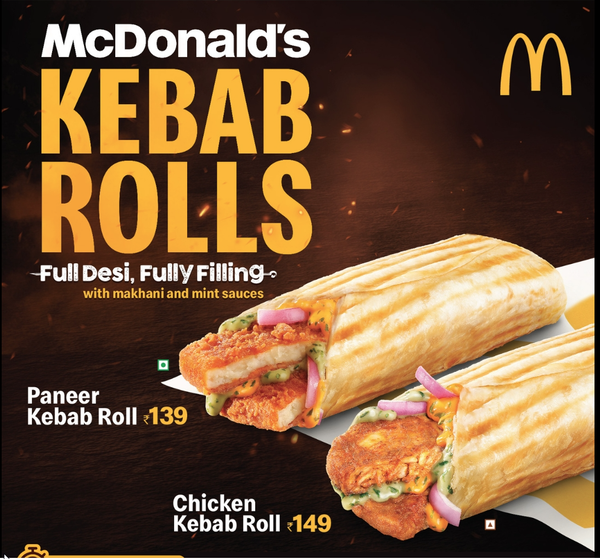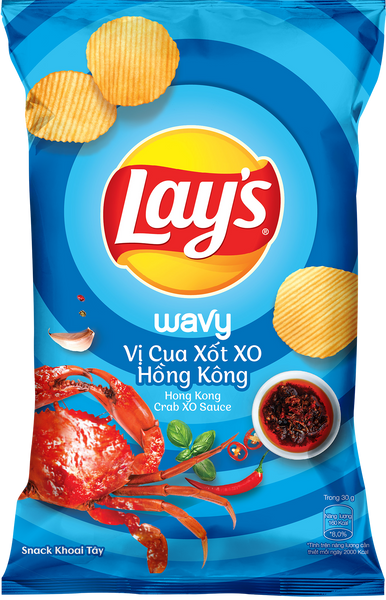How to craft a robust international marketing strategy for global success
- Jo Silverwood
- Read time: 15 minutes

An international marketing strategy is like a roadmap for global expansion, detailing your destination, the route to get there, the potential challenges, and strategies for overcoming them.
Without a strategy, navigating the complex terrain of international markets can be fraught with unexpected challenges, possibly delaying or derailing your global business objectives.
A robust international marketing strategy that considers the unique languages and cultural nuances of each territory you aim to sell to - alongside regulatory and economic factors - is the best way to ensure global success when scaling internationally.
The creation of your plan should follow these 4 stages: Assessment, Selection, Deployment, and Monitoring. Let’s dive deeper into the tactics involved.
4 steps to create a strong international marketing strategy
1. Assessment: Gaining deep market insights
- Objective Setting: Define clear goals to steer the strategy, aligned with broader expansion objectives
- Market Research: Conduct comprehensive research to understand market size, potential, customer demographics, and trends. Assess cultural, legal, and linguistic factors, alongside barriers to entry. This should include multi-lingual keyword research by a specialist native speaker who understands the language and how international SEO works
- Competitive Analysis: Evaluate the strengths, weaknesses, strategies, and market share of competitors to position your company effectively
- SWOT Analysis: Identify internal strengths and weaknesses, as well as external opportunities and threats impacting global expansion
- Market Entry Options: Consider various entry strategies like exporting, licensing, or direct investment, choosing the most fitting approach
2. Selection: Establishing a strategic framework
- Market Segmentation: Identify and segment the target audience based on demographics, behaviours, and preferences
- Value Proposition Development: Craft a unique value proposition for each target market, addressing specific needs and preferences
- Positioning Strategy: Define your desired brand perception in the international market, distinguishing from competitors
- Pricing Strategy: Develop a pricing model considering local market conditions and aligning with your value proposition
- Distribution and Promotion: Select appropriate channels for product distribution and promotion, including local partnerships and digital platforms
3. Deployment: Implementing the Strategy
- Localisation: Adapt products, marketing materials, and communication to resonate with local culture and language. Localisation is not only about translation – but before we move on, always have any machine assisted translation proofed by a native professional to avoid embarrassing faux pas in translation, or worse, a poorly translated piece of content or marketing slogan. This could damage a brand’s reputation before you’ve even got started in the new market.
- Culture: Aside to human translation, there’s far more to consider than just when it comes to international content localisation. It’s sensible to consider the 5 cultural elements of your new audience – customs, interests, religion, laws and values. This will help you to ensure your marketing aligns with any cultural sensitivities and expectations that are important to them
- Marketing and Promotion: Launch tailored marketing campaigns using digital, traditional, and social media channels
- Sales Strategy: Implement your distribution approach, ensuring product availability through selected channels
4. Monitoring: Managing & measuring performance
- Performance Monitoring: Regularly track the effectiveness of your marketing efforts using KPIs and customer feedback, ready to make necessary adjustments if something isn’t working as expected
- Compliance and Risk Management: Adhere to local regulations and develop plans to mitigate risks like currency fluctuations or political changes
By methodically navigating through these stages, companies can effectively implement and manage their international marketing strategies, paving the way for successful global expansion.
Our top 15 international marketing tips
- Understand local markets: Research each target market thoroughly to understand local consumer behaviours, preferences, and cultural nuances. Tailor your approach to meet these specific needs.
- Localise your website: Ensure your website is localised for different regions. This includes translating content into local languages, using local currencies, and adapting to regional search engine optimisation (SEO) practices.
- Mobile optimisation: With the increasing use of smartphones for online shopping globally, ensure your website is mobile-friendly and responsive.
- Cultural sensitivity in marketing: Develop marketing campaigns that are culturally sensitive and relevant to each target audience. Avoid one-size-fits-all strategies, as they may not resonate across different cultures, and at worst risk damaging your brand if you get it wrong.
- International SEO and SEM: Optimise your website and adapt your SEO for international markets and search engines. Consider both global and local search engines and use region-specific keywords. Dive deeper into the benefits of a strong international SEO strategy in our guide on international SEO tips to maximise your global eCommerce sales and download our ‘Top tips on international SEO’.
- Cross-border payment solutions: Offer multiple payment options that cater to the preferences of customers in different regions. This might include credit cards, e-wallets, or local payment systems.
- Shipping and Logistics: Clearly communicate shipping policies, costs, and timeframes. Consider partnering with local logistics companies to streamline shipping and reduce costs.
- Global customer service: Offer customer service in the local language and consider time zone differences for timely responses. Utilise chatbots and FAQs to provide instant support.
- Social media strategy: Utilise social media platforms that are most popular in your target markets. Create content that engages international audiences and encourages sharing.
- Data analysis and adaptation: Regularly analyse data to understand what works and what doesn’t in each market. Be prepared to adapt your strategy based on these insights.
- Regulatory compliance: Be aware of and comply with international trade laws, data protection regulations, and e-commerce standards in different countries.
- Build trust: Establish credibility through customer reviews, trust badges, and transparent communication. This is crucial for international customers who may be unfamiliar with your brand.
- Influencer partnerships: Collaborate with local influencers to increase brand awareness and credibility within specific markets.
- Sustainability practices: Highlight sustainable practices if applicable, as this can be a significant selling point in many markets.
- Consistent branding with local flair: Maintain consistent core branding while allowing for local variations to resonate with different audiences.
Examples of successful international marketing campaigns
When going global, brands need to think carefully about how to position their brand to resonate with their new target audience, and a robust international marketing strategy is important, but this can often lead to brands thinking that they need to reinvent the wheel for their new market. But sometimes all you need is a back-to-basics approach to connect with the audience and convert them into new and loyal customers.
Let’s showcase some great real-world campaigns of household names, most of which use simple ideas which have proved successful for many global brands in recent years.
Here are 5 of our favourite examples of international marketing strategy done right by some of the most well-known brands in the world.
#1 Apple – Flexing brand identity
Apple is a brand synonymous with the concept of acting global, often tailoring their marketing campaigns to suit local markets, and offering in-store experiences.
Although they are not known for their use of any colour other than white, they launched an effective one-day Chinese New Year campaign for the Asian markets of Singapore, China, Hong Kong and Taiwan, bathing their ads in the colour red – which symbolises luck and good fortune at this important seasonal occasion in their calendar.
They adopted a one-day promotion only for customers buying specific phone or Mac models, offering a free set of red Beats wireless headphones worth almost $400.
In addition to the giveaway promotion, Apple showed a clear willingness to flex their brand identity to suit local markets, changing their packaging colour for a limited period, which is just one example of how branding flexibility in a controlled way has helped the brand to gain global recognition.
 Image: Apple
Image: Apple
#2 McDonald’s – Tailoring product ranges
Everyone across the globe recognises the golden ‘M’ as the symbol of the successful fast-food giant. While McDonald’s keep their overarching branding consistent across the globe, they do practice more ‘glocal’ marketing efforts to appeal to local tastes in different countries.
They’ve offered local flavours to many countries across the globe, tailoring their menus to add McArabia’s (flatbread sandwich in the Middle East), Macarons in France, McSpaghetti in the Philippines, and Kebab rolls to the Indian market more recently.
Regardless of what we may think of this fast-food giant, FMCG brands could learn a lot from them about appealing to a local market’s taste buds when going global.
If you don’t have the time or budget to create different global product strategies for a new product, you could always consider product adaptation in foreign markets. It could be as simple as adapting an item to offer different benefits to suit the local market and culture. Even a minor product change can really make a difference and help you appeal to new audiences. It’s about understanding the market you want to enter – meaning you may need to exact more or less changes in one territory over another depending on the product and its international and global brand strategy. You may need to change the pricing in one market and adapt quality or tweak the product slightly for another. The key is ensuring that everything still works with your overarching international strategy.

Image: Mcdonald's India
#3 Walkers - Product and brand name adaptations
One great example of how a famous snack brand has flexed brand identity to engage new customers around the world. Once American company Pepsi bough the British snack manufacturer Walkers, they decided to market the famous crisp under the brand name ‘Lays’ in the USA, Canada and across Europe as part of their international marketing strategy. In the US this was a nod to the surname of the founder (Frito-Lay), but in Europe the name was adopted because ‘Walkers’ was too difficult for non-native English speakers to pronounce due the W, K and R. The company also adopts different names in other parts of the world to resonate better with the local markets - ‘Chipsy’ in Egypt and the Western Balkans; ‘Tapuchips’ in Israel; ‘Margarita’ in Colombia, and ‘Sabritas’ in Mexico.
The brand also adapts recipes to appeal to tastes of the local market, offering weird and wonderful flavours such as ‘Hong Kong crab’ flavour in Vietnam, ‘scallops with white cream sauce’ in Taiwan, ‘Hong Kong style dumpling’ in Thailand, and ‘fries and gravy’ flavour in Canada, almost as a nod to the famous French Canadian dish ‘Poutine’ (without the cheese curds) to name just a few of the adventurous flavours you can find on supermarket shelves in different countries across the globe.

Image: Lays Vietnam
#4 Duolingo - Leveraging the power of social media
Duolingo has become the most popular language learning app in recent years, offering 106 courses in 26 languages across the globe and boasting the number 1 position in the Apple app store.
As a gamified learning app, this brand is all about making the often difficult process of learning a new language fun and enjoyable. The brand stands out for its playful and cheeky personality, with its omnipresent, memorable bright green owl mascot creating a buzz across its social media marketing tactics with amazing results. It never takes itself too seriously, which also appeals to the target market and supports its intended brand persona as humorous and entertaining.
Duolingo have significantly increased their market share over the last decade, not least because they’ve really harnessed the power of the right social media platforms. They use short, snappy, and often tongue-in-cheek TikTok videos with relevant popular hashtags to encourage new users to download their free app and existing users to remember to use it.
In 2021, they further leveraged the power of TikTok to launch an app install campaign called “Speaking English doesn’t cost” in Brazil to encourage native Portuguese speakers to use their fun and free tool to learn English. The result?TikTok's own case study reported over 90 million video views and the follower base grew by over 1400%.

Images: Google Play Store & TikTok
#5 WED2B – Fully localised International store expansion
Our final example highlights a slightly less well-known brand name on a global scale, but one that we’ve worked with to expand internationally online into 5 European markets and become the UK’s number one award-winning online bridal fashion retailer.
Following our successful store migration and digital strategy which saw WED2B take the top spot in organic search, we were asked to support their mission to dominate the EU bridal retail market. As they opened physical EU stores, our international strategy involved international domain configuration, international SEO, and content localisation. We launched fully localised online stores to target Ireland, Belgium, Netherlands and Germany, translating into French, Dutch and German with great success.
Our strategy to connect with the target markets in their native languages was important – brides need to trust a brand when purchasing the once in a lifetime dream wedding dress, even more important when considering they are potentially purchasing this high-ticket item ‘off the peg’ online, instead of visiting a physical store. Their customer journey needed to be supported with content translated into their native language, which included style guides as well as product and legal information, inspirational articles, and testimonials from real WED2B brides. This helped build trust and generate sales.
Read more about this example in our WED2B case study

In summary, when attempting to enter and succeed in any new market, brands should create a robust international marketing strategy, carefully considering new cultures, languages and regulations.
If you follow our 4-step plan and take on board some of our top marketing tips, you will soon be on your way to achieving your international marketing goals and driving your business growth to the next level.
Learn more about our international marketing services and how Herd can help you create a robust strategy that resonates with diverse audiences and drives global sales.
Ready to boost your existing international marketing strategy or embark on a new international expansion journey?
Get in touch with our international marketing team today to drive your global business growth.